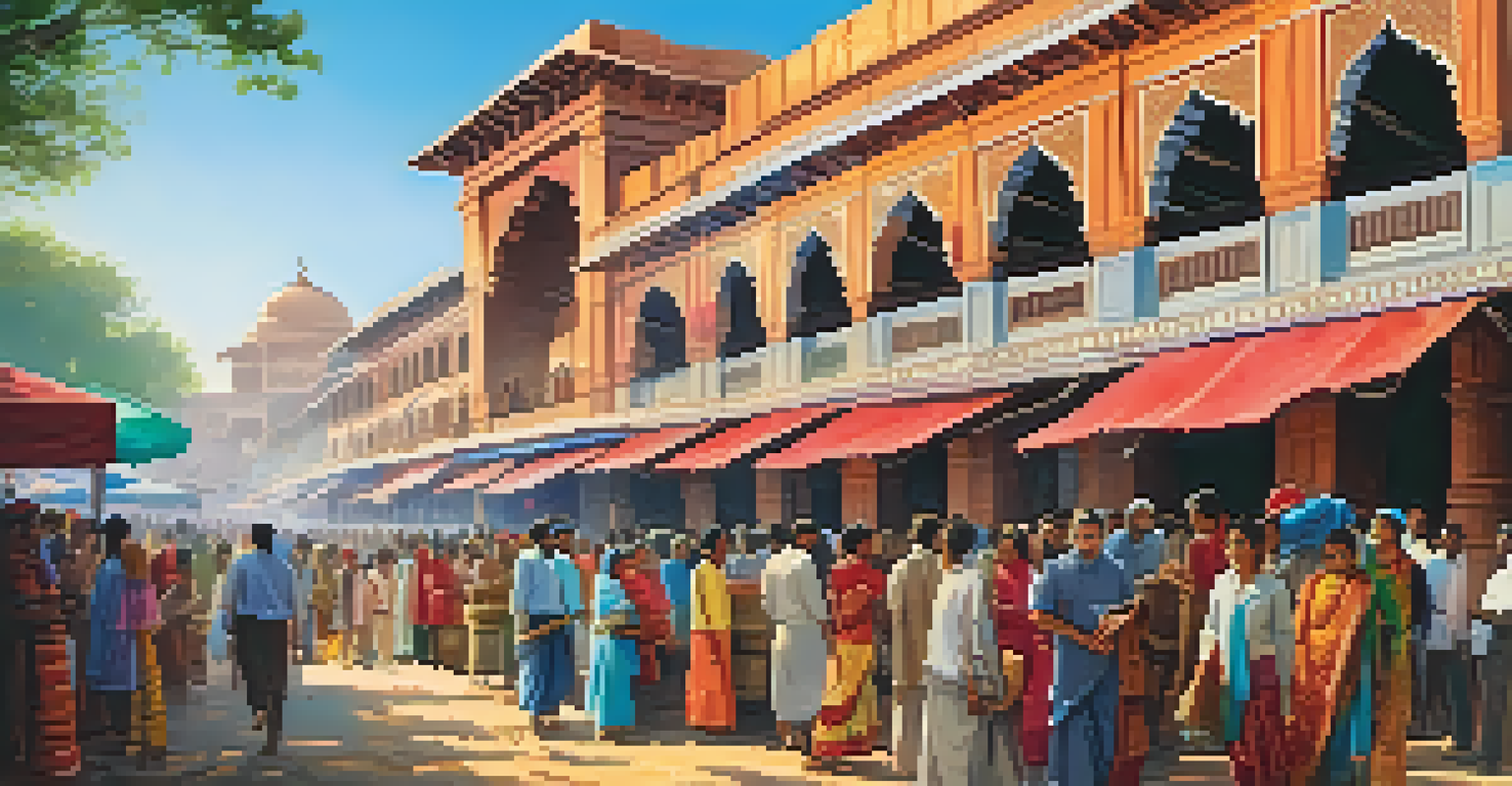The Importance of Historical Site Preservation in India Today

Understanding Historical Site Preservation and Its Value
Historical site preservation involves maintaining and protecting locations that hold cultural, architectural, or historical significance. These sites serve as a tangible link to our past, allowing us to understand the journey of our civilization. They are not just buildings; they tell stories of our ancestors, their struggles, and achievements.
Preservation of our heritage is not a luxury; it is a necessity for our existence and our identity.
In India, with its rich tapestry of history, the preservation of these sites becomes even more critical. From ancient temples to colonial-era buildings, each site offers a glimpse into the diverse cultural heritage that shapes our identity. By preserving them, we ensure that future generations can also learn from and appreciate their history.
Moreover, preserved historical sites contribute to community pride and national identity. They foster a sense of belonging and continuity, reminding us of who we are and where we come from. Without these reminders, we risk losing touch with our roots and the lessons they impart.
Economic Benefits of Preserving Historical Sites
Investing in historical site preservation is not just a cultural endeavor; it also has significant economic implications. Tourism, for instance, thrives on the allure of historical sites, bringing in revenue and creating jobs. When visitors flock to see the Taj Mahal or Jaipur's palaces, local economies benefit immensely.

Furthermore, preserved sites can enhance the value of surrounding properties, leading to increased investment in the area. When historical charm meets modern amenities, it attracts businesses and residents alike. This blend of old and new can invigorate communities while maintaining their unique character.
Preservation Connects Us to Heritage
Historical site preservation allows us to understand our past and fosters community pride and national identity.
Additionally, funding for preservation can lead to various development projects that benefit the community as a whole. By supporting local artisans and craftsmen, we can ensure that traditional skills are passed down through generations, further enriching our cultural landscape.
Challenges Faced in Preserving Historical Sites
Despite the clear benefits, preserving historical sites in India faces numerous challenges. Rapid urbanization poses a significant threat, as new developments often prioritize profit over preservation. In many cases, invaluable sites may be demolished to make way for modern infrastructure, leading to irreversible loss.
Cultural heritage is the foundation of our identity, and preserving it is a shared responsibility.
Moreover, inadequate funding and resources for preservation initiatives can hinder efforts to maintain these sites. Many local governments struggle to allocate budgets for restoration projects, leaving historical treasures vulnerable to neglect or decay. This lack of attention can result in the gradual deterioration of structures that hold immense historical value.
Public awareness also plays a crucial role in preservation efforts. Often, the significance of these sites is not fully understood by the local populace, leading to apathy towards their protection. Education and community involvement are essential for fostering a sense of ownership and responsibility toward these heritage sites.
The Role of Government in Site Preservation
Government involvement is crucial in the preservation of historical sites. Policies and regulations can help ensure that these sites are protected from harmful development and neglect. Government bodies can also allocate funding for restoration projects, ensuring that vital heritage is maintained.
Additionally, the government can promote awareness campaigns to engage the public and encourage community participation in preservation efforts. By educating citizens about the importance of these sites, they can instill a sense of pride and responsibility in protecting our history.
Economic Growth Through Preservation
Investing in historical sites boosts tourism, enhances property values, and supports local artisans, contributing to economic development.
Collaborations between government agencies, NGOs, and local communities can provide a comprehensive approach to site preservation. By pooling resources and expertise, these partnerships can create effective strategies that address the unique challenges faced by different sites across the country.
Community Engagement in Historical Preservation Efforts
Community engagement is vital for successful historical site preservation. Local residents often possess invaluable knowledge about their heritage, which can inform restoration efforts. When communities are involved, they take ownership of their history, leading to more sustainable preservation practices.
Organizing workshops, tours, and educational programs can help raise awareness about the significance of historical sites. Such initiatives encourage locals to appreciate and protect their cultural heritage actively. When people see the value in their surroundings, they are more likely to advocate for preservation.
Moreover, involving communities in preservation efforts can strengthen social bonds. Working towards a common goal fosters collaboration, connecting people from diverse backgrounds through shared history. This unity can enhance community resilience and promote a deeper understanding of cultural diversity.
Technological Innovations in Preservation Practices
Technological advancements are revolutionizing historical site preservation. Tools like 3D scanning and digital modeling allow for precise documentation of sites, making restoration projects more efficient. These technologies can help recreate missing elements of a site, ensuring that its historical integrity is maintained.
Additionally, virtual reality (VR) can offer immersive experiences, allowing people to explore historical sites without physically visiting them. This not only raises awareness but can also generate interest in visiting these sites in person. By integrating technology into preservation practices, we can reach a broader audience and engage younger generations.
Community Engagement is Essential
Involving local communities in preservation efforts ensures sustainable practices and strengthens social bonds through shared history.
Social media also plays a significant role in raising awareness about the importance of preservation. By sharing stories, photos, and educational content, we can create a sense of community around historical sites. This digital engagement can mobilize support and encourage more people to participate in preservation efforts.
Conclusion: A Collective Responsibility to Preserve Heritage
Preserving historical sites in India is not just the responsibility of the government or a select few; it is a collective duty that requires the involvement of everyone. Each of us has a role to play in safeguarding our cultural heritage, whether by advocating for preservation, supporting local initiatives, or simply educating ourselves and others.
As we navigate the complexities of modern development, it is essential to find a balance between progress and preservation. By valuing our historical sites, we not only honor our past but also enrich our present and future. They remind us of our shared history and the diversity that makes our nation unique.

In the end, preserving historical sites is about more than just maintaining structures; it's about nurturing the stories and traditions that shape our identity. Together, we can ensure that these legacies endure for generations to come, allowing future citizens to learn from and connect with their heritage.